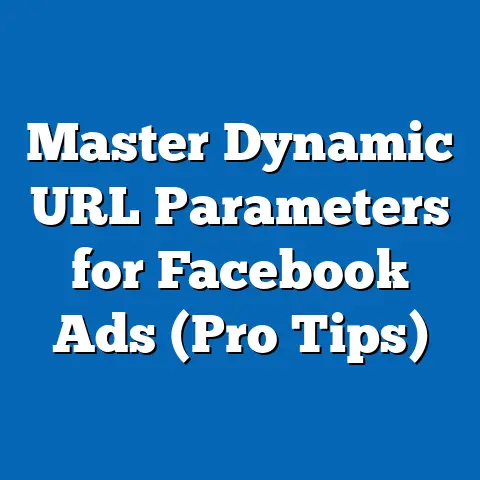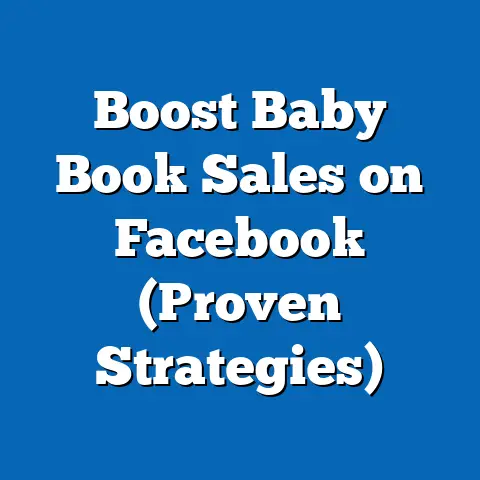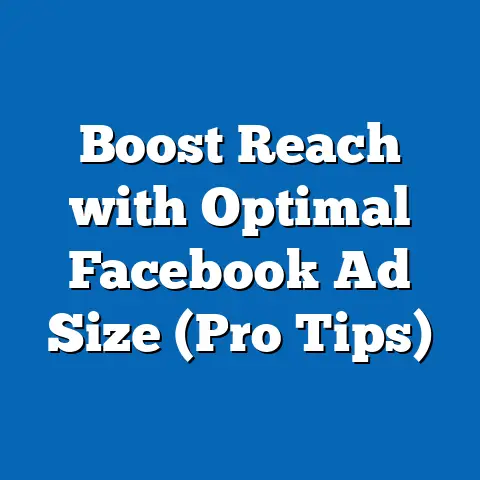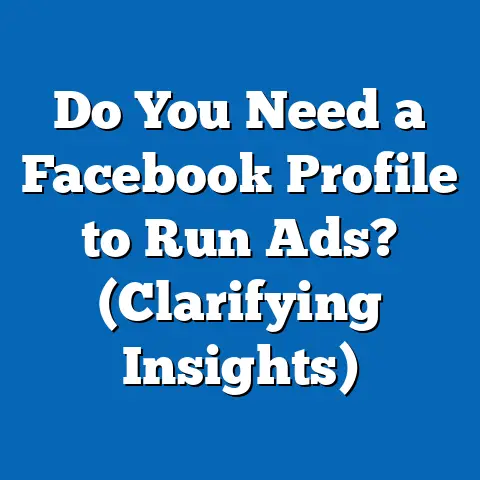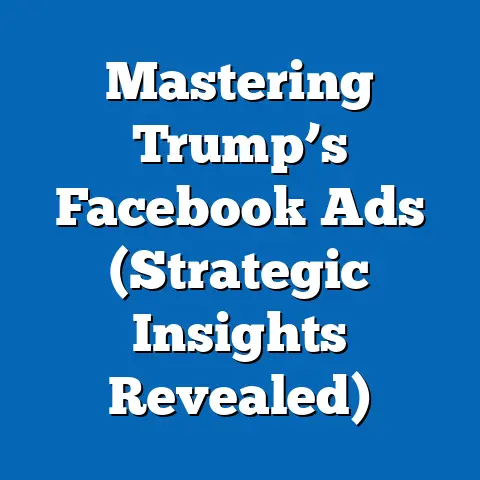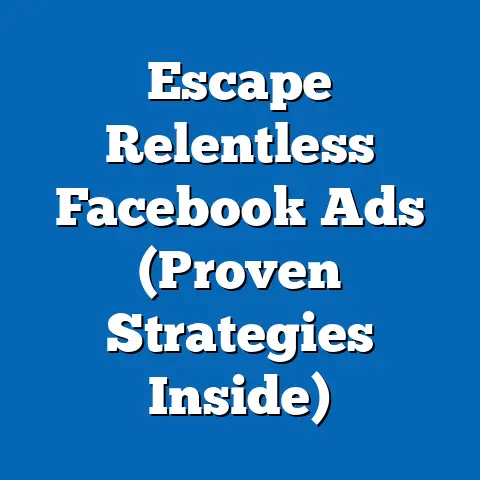Boosting Facebook Ads to YouTube (Ultimate Strategy Guide)
I’ve been navigating the world of digital marketing for quite some time now, and one thing that always strikes me is the untapped potential hidden in cross-platform strategies. Think about it: you have two powerhouses like Facebook and YouTube, each with its own massive audience and unique strengths. What if you could harness the reach of Facebook to supercharge your YouTube channel?
Did you know that as of 2023, nearly 85% of marketers are leveraging video content in their social media strategies? And where are they focusing their efforts? Primarily on Facebook and YouTube, of course! This tells me there’s a huge opportunity to connect these two platforms. In this guide, I’m going to walk you through the ultimate strategy for using Facebook ads to not only drive traffic to your YouTube channel but also increase views and subscriptions. Let’s get started!
Understanding the Landscape
Facebook and YouTube are titans in the digital realm, but understanding their individual strengths is crucial. Facebook, with its billions of active users, offers unparalleled reach and sophisticated targeting capabilities. I’ve seen campaigns where we could pinpoint our ideal customer down to the most specific interests and behaviors – it’s truly remarkable.
YouTube, on the other hand, is the go-to platform for video content. It’s a search engine in its own right, and its users are actively looking for engaging and informative videos. The key is to understand that while Facebook is great for discovery, YouTube is where people go to dive deep.
Let’s look at some numbers. As of [insert current year], Facebook boasts over [insert up-to-date user statistic] monthly active users, while YouTube sees over [insert up-to-date user statistic] hours of video uploaded every minute. These figures highlight the sheer scale of opportunity.
The beauty of promoting YouTube content through Facebook ads lies in its enhanced visibility and cost-effectiveness. I’ve found that a well-crafted Facebook ad can significantly broaden the reach of a YouTube video, introducing it to audiences who might not otherwise discover it. Plus, with Facebook’s precise targeting, you can ensure your video reaches the right people, maximizing your ROI.
Takeaway: Facebook is your discovery engine; YouTube is your engagement hub. Use Facebook ads to introduce your YouTube content to a wider, targeted audience.
Setting Clear Objectives
Before you even think about creating your first Facebook ad, you need to define your goals. What do you want to achieve by driving traffic from Facebook to YouTube? Are you aiming to increase views, boost subscriptions, or promote a specific video?
I’ve seen many campaigns fail simply because they lacked clear objectives. It’s like setting sail without a destination in mind – you might end up somewhere, but it probably won’t be where you wanted to go.
Here are some examples of measurable goals you can set:
- Increase Views: Achieve 1,000 views on the latest video within two weeks.
- Drive Subscriptions: Gain 100 new subscribers from this campaign.
- Promote a Specific Video: Increase engagement (likes, comments, shares) on a specific video by 50%.
Make sure your objectives are SMART: Specific, Measurable, Achievable, Relevant, and Time-bound. This will not only help you stay focused but also make it easier to track your progress and measure your success.
Takeaway: Define clear, measurable objectives before launching your campaign. This will guide your strategy and ensure you’re working towards a specific goal.
Targeting the Right Audience
One of the most powerful aspects of Facebook advertising is its incredibly granular targeting capabilities. You can reach potential YouTube viewers based on a wide range of factors, including demographics, interests, behaviors, and even custom audiences.
I remember working on a campaign for a fitness channel on YouTube. We were able to target people who were interested in specific types of workouts (like HIIT or yoga), followed fitness influencers, and had recently purchased fitness-related products. The results were phenomenal!
Here are some key considerations when targeting your audience:
- Demographics: Consider age, gender, location, education level, and job title.
- Interests: Target people who have expressed interest in topics related to your YouTube content.
- Behaviors: Target people based on their online behaviors, such as purchasing habits or device usage.
- Custom Audiences: Retarget website visitors, email subscribers, or people who have interacted with your Facebook page.
- Lookalike Audiences: Expand your reach by targeting people who are similar to your existing customers or followers.
Creating audience personas is a great way to visualize your ideal viewer. Give them a name, a backstory, and a set of interests. This will help you craft ads that resonate with them on a personal level.
Takeaway: Leverage Facebook’s targeting features to reach potential YouTube viewers who are most likely to be interested in your content.
Crafting Compelling Ad Content
Your ad copy is your first impression, so make it count! You need to grab people’s attention and entice them to click through to your YouTube video.
Here are some tips for writing effective ad copy:
- Write Engaging Headlines: Use strong verbs and create a sense of curiosity. For example, “Discover the Secret to [Desired Outcome]” or “Learn How to [Achieve a Specific Goal].”
- Create Attention-Grabbing Visuals: Use high-quality images or videos that are visually appealing and relevant to your YouTube content.
- Incorporate Strong Calls to Action (CTAs): Tell people exactly what you want them to do. Use phrases like “Watch Now,” “Learn More,” or “Subscribe Today.”
- Highlight the Value Proposition: Explain what viewers will gain by watching your YouTube video. Will they learn something new, be entertained, or solve a problem?
- Keep it Concise: People have short attention spans, so get to the point quickly.
I’ve seen countless ads that fall flat because they fail to clearly communicate the value of the YouTube video. Don’t make that mistake! Tell people why they should care.
Let’s look at an example. Imagine you’re promoting a YouTube video about healthy recipes. Here’s a possible ad copy:
Headline: “Delicious & Healthy Recipes You Can Make in Under 30 Minutes!”
Visual: A mouthwatering image of a healthy meal.
Body: “Tired of boring salads? Discover easy and delicious recipes that will help you eat healthy without sacrificing flavor. Watch now and get your free recipe guide!”
CTA: “Watch Now”
This ad copy is engaging, highlights the value proposition (easy and delicious recipes), and includes a clear call to action.
Takeaway: Craft compelling ad copy that grabs attention, highlights the value of your YouTube video, and includes a strong call to action.
Choosing the Right Ad Format
Facebook offers a variety of ad formats, each with its own strengths and weaknesses. Here are some of the most effective ad formats for promoting YouTube content:
- Video Ads: These are the most obvious choice. Use a short, attention-grabbing video clip from your YouTube video to entice viewers to click through.
- Carousel Ads: Showcase multiple videos or highlight different aspects of a single video. This format is great for storytelling and showcasing a variety of content.
- Slideshow Ads: Create a visually appealing slideshow using images or short video clips. This format is a cost-effective alternative to video ads.
- Image Ads: Use a compelling image with engaging ad copy to drive traffic to your YouTube video.
I’ve found that video ads tend to perform best for driving traffic to YouTube, as they allow you to give viewers a sneak peek of your content. However, carousel ads can be effective for showcasing a range of videos or highlighting different aspects of a longer video.
The best ad format for you will depend on your campaign goals, target audience, and budget. Experiment with different formats to see what works best for your content.
Takeaway: Choose the right ad format based on your campaign goals, target audience, and budget. Video ads and carousel ads tend to be the most effective for driving traffic to YouTube.
Budgeting and Bidding Strategies
Setting a budget for your Facebook ad campaign is crucial. You need to allocate enough resources to reach your target audience and achieve your objectives, but you also don’t want to overspend.
Here are some factors to consider when setting your budget:
- Your Goals: How many views or subscribers do you want to gain?
- Your Target Audience: How large is your target audience?
- Your Bidding Strategy: Are you using CPC or CPM bidding?
- Your Ad Quality: Are your ads engaging and relevant to your target audience?
Facebook offers two main bidding strategies:
- Cost Per Click (CPC): You pay each time someone clicks on your ad. This is a good option if you’re focused on driving traffic to your YouTube video.
- Cost Per Mille (CPM): You pay for every 1,000 impressions (times your ad is shown). This is a good option if you’re focused on brand awareness.
I typically recommend using CPC bidding when promoting YouTube content, as it ensures you’re only paying for people who are actually interested in your video. However, CPM bidding can be effective if you’re trying to reach a large audience and build brand awareness.
Here’s a sample budget breakdown for a hypothetical campaign:
- Total Budget: $500
- Campaign Duration: 2 weeks
- Daily Budget: $35.71
- Bidding Strategy: CPC
- Target CPC: $0.50
This budget would allow you to reach a significant number of people and drive a decent amount of traffic to your YouTube video.
Takeaway: Set a budget that aligns with your goals, target audience, and bidding strategy. Consider using CPC bidding when promoting YouTube content.
Analyzing and Optimizing Campaign Performance
Once your campaign is live, it’s crucial to track its performance and make adjustments as needed. Facebook Ads Manager provides a wealth of data that you can use to monitor your campaign’s progress.
Here are some key metrics to track:
- Click-Through Rate (CTR): The percentage of people who click on your ad after seeing it. A high CTR indicates that your ad copy and visuals are engaging.
- Conversion Rate: The percentage of people who take the desired action after clicking on your ad (e.g., watching your YouTube video, subscribing to your channel).
- Engagement Rate: The percentage of people who interact with your ad (e.g., likes, comments, shares).
- Cost Per Click (CPC): The average cost you pay for each click on your ad.
- Cost Per Conversion: The average cost you pay for each conversion (e.g., view, subscriber).
I’ve seen campaigns where a simple change to the ad copy or targeting can dramatically improve performance. Don’t be afraid to experiment and test different approaches.
Here are some tips for optimizing your ads based on performance data:
- Adjust Targeting: Refine your targeting based on the demographics, interests, and behaviors of people who are responding well to your ads.
- Refine Ad Content: Test different headlines, visuals, and calls to action to see what resonates best with your target audience.
- Adjust Budget Allocations: Allocate more budget to the ads that are performing best and reduce budget for the ads that are underperforming.
Takeaway: Track your campaign’s performance closely and make adjustments as needed. Experiment with different ad copy, visuals, and targeting options to optimize your results.
Case Studies and Success Stories
Let’s take a look at some real-world examples of brands and creators who have successfully used Facebook ads to boost their YouTube channels:
- Example 1: A Small Business Promoting Product Demos: A small business selling kitchen gadgets used Facebook video ads to showcase short product demos on YouTube. They targeted foodies and cooking enthusiasts, resulting in a significant increase in YouTube views and website traffic.
- Example 2: A Music Artist Building a Fanbase: A music artist used Facebook carousel ads to promote different music videos on YouTube. They targeted fans of similar artists and saw a surge in YouTube subscribers and engagement.
- Example 3: A Travel Blogger Increasing Channel Views: A travel blogger created visually stunning slideshow ads on Facebook showcasing their YouTube travel vlogs. They targeted people interested in travel and adventure, leading to a boost in YouTube views and channel growth.
These examples highlight the potential of Facebook ads to drive traffic and engagement to YouTube channels across various industries.
Key Takeaways from these Success Stories:
- Target the Right Audience: Precisely target your ideal viewers based on their interests and behaviors.
- Create Engaging Content: Use high-quality visuals and compelling ad copy that resonates with your target audience.
- Track and Optimize: Monitor your campaign’s performance and make adjustments as needed.
Takeaway: Learn from successful case studies and apply their strategies to your own campaigns.
Conclusion
Boosting your YouTube channel with Facebook ads is a powerful strategy that can significantly enhance your online presence and drive traffic and engagement to your content. By understanding the landscape, setting clear objectives, targeting the right audience, crafting compelling ad content, choosing the right ad format, budgeting effectively, and analyzing your campaign performance, you can unlock the full potential of this cross-platform approach.
I hope this ultimate strategy guide has provided you with the knowledge and tools you need to succeed. Now, go out there and start creating amazing Facebook ad campaigns that supercharge your YouTube channel!

